25
JulGrab Deal : Flat 30% off on live classes + 2 free self-paced courses - SCHEDULE CALL
In the early 1970s, flat file systems were used to store the Company data. The biggest problem with the flat file system was that each Company implement their own flat files. There were no standards to store and access data from flat files.
To overcome this issue, relational databases came into existence. But relational databases also get a problem later that it could not handle the voluminous data. To manage every tough issue, NoSQL databases were developed finally. Get an in-depth knowledge of NoSQL and prepare yourself for a career in it, join the professional SQL certification program now!
In this NoSQL Tutorial blog, we will discuss the following topics:
Carl Strozzi introduced the term NoSQL in 1998 for his open-source file-based databases. Traditionally, SQL or relational databases were used to store or retrieve data for future insights while NoSQL database encompasses a wide range of database technologies that can store structured, semi-structured, unstructured, or polymorphic data together.

When you are serious about your career choice in NoSQL and preparing for the same, consider joining a job-oriented Database Management Course along with going through the NoSQL Tutorial.
The increased use of social media has grown user-driven data rapidly that needs to be managed, analyzed, and archived properly. Additionally, other data sources like GPS, sensors, automated trackers, and monitoring systems also produce a huge amount of data regularly. The huge data set has introduced the challenges of data storage, data management, data analysis, etc. Moreover, it becomes semi-structured and sparse. In the case of RDBMS, there is a need for upfront schema and relational references.
To resolve these problems related to semi-structured or unstructured data, a range of new database products has emerged during the last few years. The new class of database products consists of column-based data stores, key-value pair databases, and document databases, etc. When used together, these databases are called NoSQL and consist of diverse products each having a unique set of features and propositions in tutorial NoSQL.
Other than this, NoSQL databases can be scaled out easily when compared to SQL databases. The load is distributed among multiple hosts as shown below whenever load increases.

In the next section of this NoSQL tutorial guide, there is a detailed idea of how SQL and NoSQL databases are different from each other.
|
RDBMS |
NOSQL |
|
|
These were the significant years in the history of NoSQL, let’s move further in this NoSQL tutorial guide and check out the top features of the database.
Non-Relational
Distributed Computing


Simple API
Do you have any idea about the difference between NoSQL and SQL? Take a glimpse of SQL vs NoSQL before we move to the next section in the NoSQL tutorial guide!

There are four classes of NoSQL databases in tutorial NoSQL with their unique attributes and limitations. You should understand each of them in depth first and choose the best one that suits your requirements the most in NoSQL tutorial guide. Let us see each of them one by one.
This database is designed to manage heavy loads and a lot of data gracefully. It stores data in key-value pairs where each key is unique and value can be anything like object, string JSON, etc. Here is one quick example of the database given below.
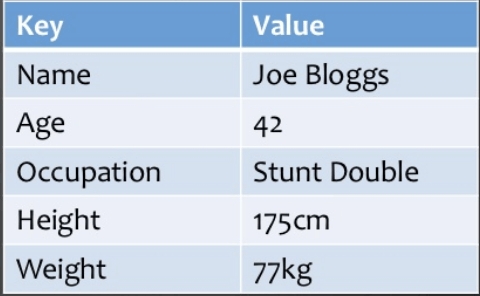
It is the most basic type of database that can be used as collections, arrays, dictionaries, etc. It helps developers to store schema-less data. It works best for shopping cart content.
This database is column-oriented where each column is treated separately, and values are stored contiguously. Here is the simple example of how column-based NoSQL database looks like:
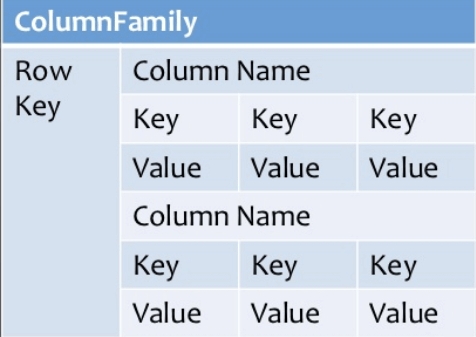
It works best for aggregation queries like SUM, Count, MAX, MIN, AVG, etc. It helps to find data quickly in columns. This database is majorly used for managing catalogs, data warehouse, BI projects, CRM, or library, etc.
When you are looking to begin your career in SQL and that’s why learning from NoSQL tutorial guide, do not forget to check the earning potential of the field. Here is All you Need to Know About SQL Database Administrator Salary!
It stores and retrieves the data as key-value pair, but the value is stored in documents in XML or JSON formats. A database itself understands or queries the data. In the diagram, you can see a table where data is stored in row and column format. And the right-hand side is covered by documents where data is stored in JSON format. Here, you don’t have to define columns which makes it more flexible as compared to relational databases.
It is mostly used for blogging platforms, CRM systems, or real-time analytics, etc. it is used for complex transactions that require multiple operations against varying aggregate functions.
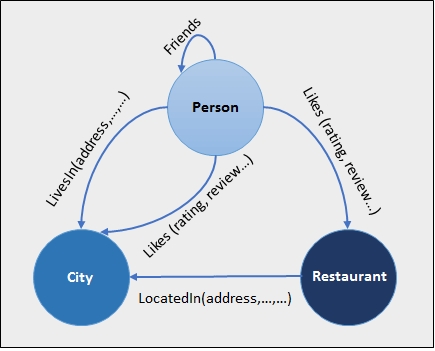
This database stores the entity and defines the relationship among different entities. The stored entity is named as the node, and the relationship is defined as the edge. Each node and edge must have a unique identifier. Here, tables are multi-relational in nature, not loosely connected. Traversing relationship is much faster in NoSQL databases when compared to relational databases. It is mostly used for logistics, networks, and spatial data.
Query Mechanism tools for NoSQL Database
The data retrieval mechanism in NoSQL database is REST-based the value is retrieved based on key/ID with the GET resource. Document stores the most difficult queries as they use the key-value pair to store the data. For example, Couch DB define views with the MapReduce.
This theorem is given by the Brewer which states that it is not possible for distributed data stores to give more than two out of total three guarantees. These are consistency, partition tolerance, and availability.
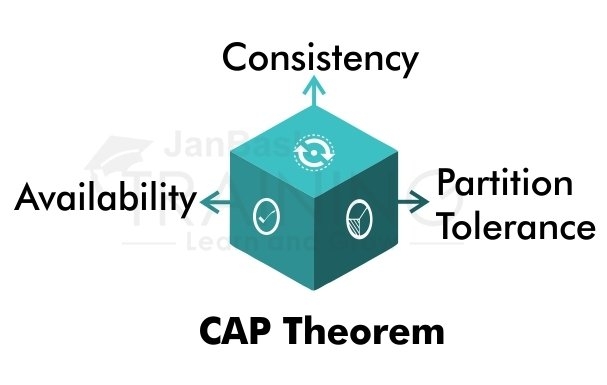
Do you know about SQL injection? Go through this blog to know – What is SQL Injection? How to Prevent SQL Injection Attacks?
1). Consistency:
The data should remain consistent even after the execution of an operation, it means once data is written, any future read request should be able to access the same data. For example, once you update the status of an order, the client should be able to check the same data.
2). Partition Tolerance:
If communication among servers is not stable even then the system should be able to work properly, it is called the partition tolerance. For example, when the server is divided into multiple partitions, they may or may not communicate together. If one part of the database is unavailable even then other parts should not be affected.
3). Availability:
The database should be highly responsive and available without any downtime.
4). Eventual Consistency
The term eventual consistency means multiple data copies are available on different machines to get higher availability and scalability. If some changes are made to one file, it should automatically be reflected other replicas.
Data replication is not instantaneous because a few copies are updated frequently and a few over time. But you have to make sure content is the same for all replicas. Hence, the name of this phenomenon is given as eventual consistency.
BASE: Basically Available, Soft state, Eventual consistency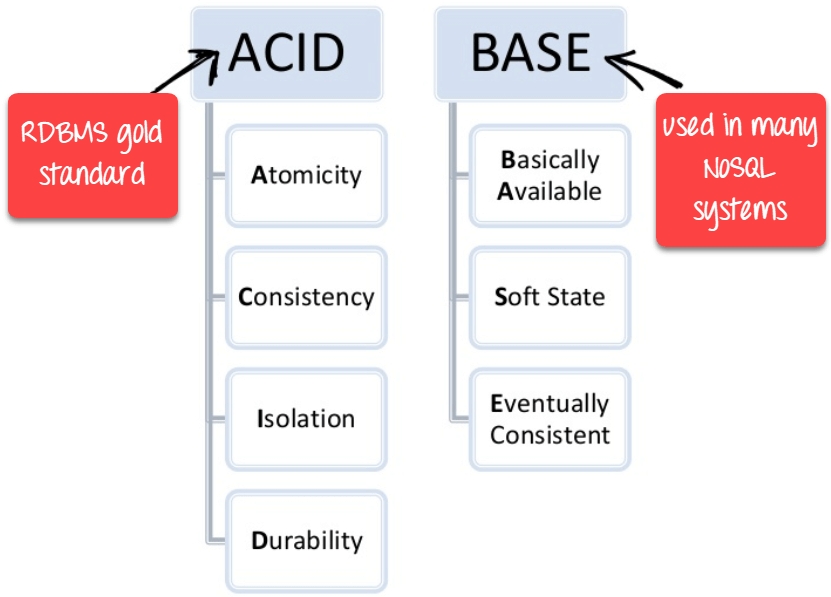
SQL Server Training & Certification

The desired technical characteristics for NoSQL database in tutorial NoSQL are given as below.

A). Primary and Analytic Data Source Capability
The first criteria for any NoSQL solution are that it must serve as the primary or active data source that receives data from different business apps. It should act as the secondary data source or analytical database to enhance the overall functionalities of business apps. Further, it should be capable of integrating with different types of data like structured, semi-structured, or unstructured. Additionally, it can execute complex queries too.
B). Big Data Capability
NoSQL databases are good with Big data, and they can be scaled quickly to manage voluminous data from terabytes to petabytes. Additionally, it delivers high performance for data velocity, data complexity, and the data variety.
C). Continuous Availability
NoSQL database is always available without any single point of failure. All nodes in the cluster can read request even if some machine is down. It can replicate data among different physical machines within a data center. It avoids hardware outages too.
Enhance your knowledge further in SQL, check out the guide – SQL BETWEEN: Retrieve Desired Range of Values with Examples
D). Multi-Data Center Capability
Business enterprises need highly distributed databases that are spread across multiple data centers or graphical locales without any performance issues. The solution includes the ability to handle multiple data centers without concerning the overall occurrences of read and write operations. A good NoSQL database supports multiple data centers and provides configuration options to maintain a proper balance between consistency and performance.
E). Separate Cache layer is not required
A good NoSQL database uses and distributes data among different participating nodes. It does not have a separate cache layer to store the data. The memory cache of multiple participating nodes stores data quickly for immediate I/O access. It eliminates the problems of synchronizing cache data with the persistent database. In this way, it supports higher scalability with fewer management issues.
F). Cloud-Ready
The adoption of cloud platforms is increasing daily by leading enterprises worldwide. This is the reason why every robust platform must be cloud-ready. NoSQL databases like MongoDB are cloud-ready able to work in a cloud setting when necessary. It supports the hybrid solution when one part of the database is hosted within the enterprise, and another part is hosted in the cloud.
G). High Performance and Scalability
NoSQL databases can enhance performance by adding multiple nodes to the cluster. Usually, the performance of a database system goes down with additional nodes to a cluster. However, a good NoSQL database increases performance for both read and write operations when new nodes are added, and performance gains are linear in nature.
SQL Server Training & Certification

Here, we have listed the major benefits of the NoSQL database but there a few more in tutorial NoSQL as discussed by enterprises like easy to implement, easy to use, supports multiple languages & platforms, thriven open source community, etc.
Become the part of a professional SQL Community where you can learn from industry experts and get proper guidance while learning through the NoSQL tutorial.
The concept of NoSQL databases became popular with internet giants like Google, Amazon, Facebook, etc. who produce voluminous data daily. It is schema-free, avoids joins, and easy to scale when required.
The different types of NoSQL database can handle structured, semi-structured and unstructured data properly with equal effect. It makes any database highly available, consistent without a single point of failure.
Looking at multiple benefits and features of NoSQL databases in the NoSQL tutorial guide, it is clear that they are certainly better than SQL or relational databases or more demanded by enterprises recently. To learn more about NoSQL database, join our SQL certification program and become a database master now.
Q. What is NoSQL and how does it work?
Ans: Key-value, document, columnar, and graph formats are just a few examples of the many different types of data models that can be supported by the NoSQL approach to database management. In general, a NoSQL database is non-relational, distributed, adaptable, and scalable.
Q. Give an example of NoSQL Database?
Ans: MongoDB is a perfect example of NoSQL database as per NoSQL tutorial. A document-oriented database called MongoDB stores documents that resemble JSON in dynamic schemas. An open-source, web-based database created by Apache® is called CouchDB.
Q. Is MySQL an example of NoSQL?
Ans: While NoSQL databases are document, key-value, graph, or wide-column stores, SQL databases are table-based. MySQL, Oracle, PostgreSQL, and Microsoft SQL Server are some examples of SQL databases. MongoDB, BigTable, Redis, RavenDB Cassandra, HBase, Neo4j, and CouchDB are a few examples of NoSQL databases.
Q. What are the characteristics of NoSQL?
Ans: The 5 essential characteristics of NoSQL database are as follows:
Q. What language is used to query NoSQL?
Ans: There are numerous types and implementations of NoSQL databases. As a result, a wide range of query languages and APIs can be used to query NoSQL databases. The most widely used NoSQL database in the world, MongoDB, may be queried using the MongoDB Query Language (MQL).
Q. Is JSON a NoSQL?
Ans: A form of NoSQL database called a document database stores data in JSON or BSON documents.
Q. Is NoSQL difficult to learn?
Ans: No, learning NoSQL databases is not difficult. In NoSQL databases, modelling data is really quite intuitive, according to many developers. For instance, documents in MongoDB map to data structures in the majority of widely used programming languages, which speeds up and simplifies development.
Q. What is a NoSQL database?
Ans: A database that stores data in a different format than relational tables is known as a NoSQL database.
Q. Which is the best SQL training course?
Ans: There are various types of SQL courses available whether you are looking for free or paid option. JanBask Training brings a comprehensive SQL Training Program that helps you learn everything about SQL from basic to advanced level and make your job-ready.
Q. How long does it take to learn SQL?
Ans: SQL is a relatively simple language, you can become familiar with the basics within two to three weeks. But if you're planning on using SQL skills for career purpose, you will need a higher level of fluency and join a professional training program.
 Pinterest
Pinterest
 Email
Email
This is Puja Bhardwaj, a creative writer, and content strategist. I’m passionate about storytelling through written and visual content, and market that content for cultivating a committed audience. I come to the table with 5 years of content writing and marketing experience (in the agency, in-house, and freelance writing).

Cyber Security

QA

Salesforce

Business Analyst

MS SQL Server

Data Science

DevOps

Hadoop

Python

Artificial Intelligence

Machine Learning

Tableau
Search Posts
Related Posts
Receive Latest Materials and Offers on SQL Server Course
Interviews
Kameron Rogers
This is a perfect guide on NSQL. I was looking for such an amazing post from the last few days, but could not find one. Fortunately, I could go through this post and get so much new info. Thank you!
JanbaskTraining
Oh! That’s great. Thank you too for your valuable feedback.
Andre Reed
Wow..!! This Guide on NSQL is really helpful with so much knowledge. This is very helpful!
JanbaskTraining
That’s interesting to know. Let us know if you need any help.
Gunner Cook
The above Guide on the NSQL is just superb. Being a new user I have to keep looking for new formulas and knowledge. Thanks for sharing this post!
JanbaskTraining
This is quite motivating to hear that you found this post helpful and interesting.
Jake Morgan
Really good article with all the important information on NSQL. I got to know a lot about the process after reading this blog. Thanks for sharing this blog.
JanbaskTraining
That’s great! Let us know if you have any more questions.
Hayes Bell
A comprehensive blog on the NSQL of this kind is what I wanted. This guide provides a lot of information without being lengthy or boring.
JanbaskTraining
Hopefully, you found it helpful. If you have any questions, feel free to write to us, we will be happy to help you.
Manuel Murphy
Awesome blog! I have learned so much about NSQL. Thank you so much for sharing!
JanbaskTraining
It is great to hear that you found this post interesting. Often visit our website to read more!
Prince Bailey
I found your blog today and it is very well written. Keep up the good work & share more about NSQL.
JanbaskTraining
Sure, we will soon come up with a new guidepost on the best career options.
Bodhi Rivera
Such a wow post! Very well explained, very understanding with so much information on the NSQL.
JanbaskTraining
That’s interesting to hear from you! Keep coming back to our website to read more content.
Cohen Cooper
A lot of people want to know more about SQL and its benefits. so I’m really happy that I got to find your site before using it.
JanbaskTraining
It’s our pleasure that we could help you. Feel free to write to us if you have any questions.
Sean Richardson
Such an informative and great article! Every beginner in the NSQL must read this article. This is very helpful for me and people who are looking for the download process.
JanbaskTraining
Glad to hear that you found this post helpful! Often visit our site for more interesting content.